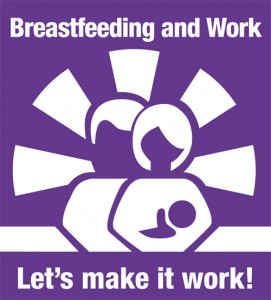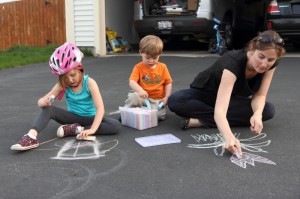 Attachment Parenting International (API) is pleased to announce that we are taking part in World Breastfeeding Week, Aug. 1-7. Check daily for posts about how women are making breastfeeding work for them and supporting others in their motherhood journeys.
Attachment Parenting International (API) is pleased to announce that we are taking part in World Breastfeeding Week, Aug. 1-7. Check daily for posts about how women are making breastfeeding work for them and supporting others in their motherhood journeys.
The 2015 theme of World Breastfeeding Week is “Breastfeeding and Work: Let’s Make It Work!” This annual observance is coordinated by the World Alliance for Breastfeeding Action (WABA), which has issued this statement:
This World Breastfeeding Week, WABA calls for concerted global action to support women to combine breastfeeding and work. Whether a woman is working in the formal, non-formal or home setting, it is necessary that she is empowered in claiming her and her baby’s right to breastfeed.
The WBW 2015 theme on working women and breastfeeding revisits the 1993 World Breastfeeding Week campaign on the Mother-Friendly Workplace Initiative. Much has been achieved in 22 years of global action supporting women in combining breastfeeding and work, particularly the adoption of the revised International Labour Organization Convention 183 on Maternity Protection with much stronger maternity entitlements, and more country actions on improving national laws and practices. At the workplace level, we have also seen more actions taken to set up breastfeeding- or mother-friendly workplaces including awards for breastfeeding-friendly employers, as well as greater mass awareness on working women’s rights to breastfeed.
The Innocenti Declaration (1990) recognized that breastfeeding provides ideal nutrition for infants and contributes to their healthy growth and development. There is much that remains to be done despite 25 years of hard work, particularly on the fourth Innocenti target that calls on governments to ‘…enact imaginative legislation protecting the breastfeeding rights of working women and establish means for its enforcement.’
WABA calls for:
- Concerted global action to support women to combine breastfeeding and work, whether in the formal sector, non-formal sector, or at home
- Ratification and implementation of maternity protection laws and regulations by governments, in line with the ILO Maternity Protection Convention
- Inclusion of breastfeeding target indicators in the Sustainable Development Goals (SDGs)
With the World Breastfeeding Week 2015 campaign, WABA and its partners at global, regional and national levels aim to empower and support all women, working in both the formal and informal sectors, to adequately combine work with childrearing, particularly breastfeeding. We define work in its broadest form from paid employment, self-employment, seasonal and contract work to unpaid home and care work.
Various strategies exist to support women working in your country or community from long-term actions to short-term actions. Together, we can make it work!
This week, API’s celebration of World Breastfeeding Week will honor a collection of inspiring mothers who are dedicated to supporting mothers in breastfeeding no matter their lifestyle choices. A few of the upcoming posts to look forward to:
- A tribute to Martha Sears, coauthor of many of the Sears parenting books
- The role breastfeeding plays in baby’s gut health and what that means for overall health not only in childhood but adulthood
- The role of historical trauma in breastfeeding rates among tribal women.
Check in tomorrow, Aug. 1, for our first installment of 2015 World Breastfeeding Week!










